Alaskan Malamute dog breeds are medium-sized breeds of dogs that originated in the Arctic region. They have thick fur, and their paws are covered in fur as well.
This is to help with protection when walking on ice or snow. Alaskans tend to be very active and energetic, making them great companions for people who like to hike, run or exercise outside.
The Alaskan Malamute is an intelligent breed of dog that was bred originally for sledding but can also excel at agility training and obedience competitions due to their high level of intelligence.
The Alaskan Malamute’s gentle demeanor with children and other animals makes them a great family pet!
What Does an Alaskan Malamute Look Like?
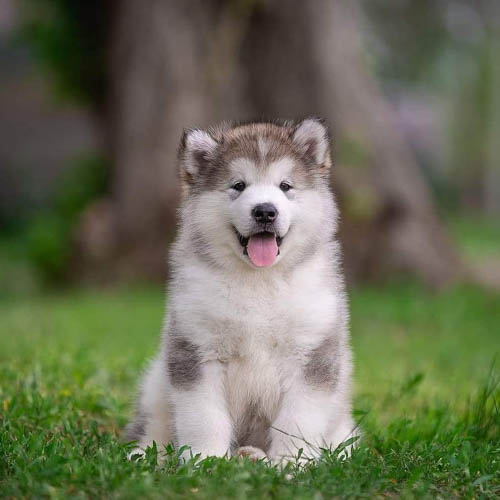
Alaskan Malamutes vary in size and appearance. The male Alaskan Malamute is between 21 and 24 inches tall at the shoulder.
They weigh anywhere from 85 to 115 pounds, making them a medium-sized dog breed. Their fur is thick and coarse and comes in all shades of gray and white, with some also having patches of red or cream.
The Alaskan Malamute has a two-layer coat. The undercoat features a wiry and greasy substance that may be up to two inches thick. The outer layer is made up of long and coarse guard hairs. The unique coat protects the Alaskan Malamute from severe cold in their Arctic homeland.
The majority of Alaskan Malamutes have a patchwork color pattern. The most typical colors are gray and white, sable and white, black and white, seal and white, red and white, or pure white.
Facial markings, blaze patterns, a splash at the nape of the neck, and a collar or half collar are just a few examples of the breed’s many characteristics. The majority of the body is white, emphasizing the face’s legs, feet, and markings.
Some Malamutes have a black-to-buff undertone around their trimmings and white regions, demonstrating the color-linked gene Agouti.
Alaskan Malamute dogs originate from the Arctic region, and their thick fur protects them against harsh winter weather. Their paws are covered in fur as well; this is to help with protection when walking over ice and snow.
This means that Alaskan Malamutes should NEVER be walked on hot asphalt or concrete. If they are, their paws will most likely burn and blister.
The Alaskan Malamute’s eyes are almond-shaped and range in color from brown to black. The eye that is a darker color, however, is regarded as more attractive. Blue eyes are not associated with purebred Alaskan Malamutes.
The Alaskan Malamute has a strong, robust body suited for endurance and power. Their broad, deep chest is well-muscled. Their back is long and straight, with a tucked-in abdomen.
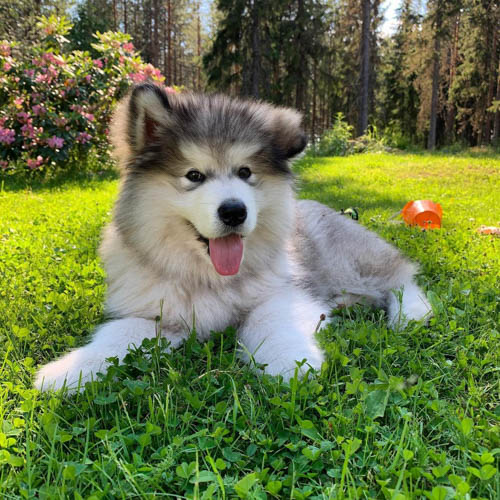
The front legs are muscular, while the rear legs are less bulky due to their need for speed when running down prey. Their hips are wide and muscled, which gives these dogs great power in their ability to jump, run or pull.
Their legs are strong and can be compared to a horse’s; they’re designed for traveling long distances at high speeds.
The Malamute’s tail is richly coated and trails over the back like a flapping plume, according to the breed standard of the American Kennel Club.
Malamute tails are usually held over the back when excited or moving around. Their tail is carried down in relaxed situations or when they’re lying down but may occasionally even be carried horizontally with a curve at the end; when they curl up in the snow, their well-furred tails aid in keeping them warm.
They often wrap their tail around their face and nose, which presumably helps them against harsh weather like blizzards.
What is the History of the Alaskan Malamute?
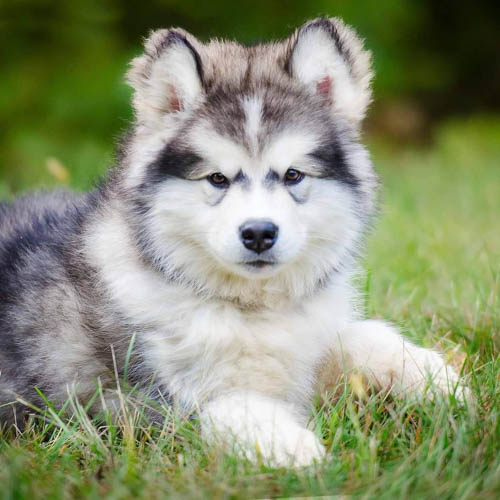
The Alaskan Malamute is descended from Arctic sled dogs that crossed the land bridge from Siberia to Alaska with native people thousands of years ago.
The Mahlemuts were one of the many Alaskan tribes who lived in the area now known as the Seward Peninsula. It was there that the Alaskan Malamute was developed, according to legend.
They were bred to pull sleds and hunt polar bears, seals, and other prey in the frigid Arctic regions. Malamutes were often considered more valuable than other dogs because of their greater strength and ability to survive harsh weather.
The indigenous people treated their pets with care and respect. The gold rush in 1896 attracted many canines from all over the world who could withstand Alaska’s harsh winters.
These dogs were crossbred with native dogs, and the pure type was lost. The Mahlemuts were a reclusive people who lived in northern Alaska, and the Alaskan Malamute emerged from the invasion relatively unscathed.
Paul Voelker, Sr., created a unique strain by crossing dogs he purchased in Alaska in the early 1900s and again in the 1920s. The strain was originally known as the “M’Loot” strain.
Several of these dogs were employed in World War I and II and Admiral Byrd’s second expedition. During World War II, most of Alaska’s registered Malamutes were loaned out for military service because of a pressing need for sled dogs.
Unfortunately, many of them were lost when they offered their services to their nation during World War II’s Antarctic campaign.
Malamutes can be traced back to the original Kotzebues or dogs registered during the open period in the late 1940s, both of which are now recognized by the International Canine Hybrid Club.
What is the Alaskan Malamute’s Temperament?
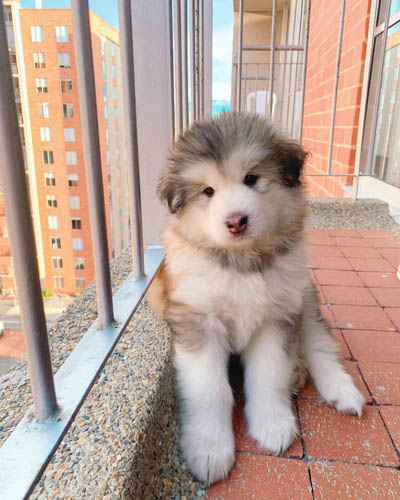
With their lively, outgoing personalities, Alaskan Malamutes will charm you. These dogs are very outgoing and get along well with children. They can be playful and make excellent companions for the whole family.
They also get along well with other pets such as cats but may try to dominate them or prevent them from drinking water out of the same bowl! It’s important to socialize your Alaskan Malamute from a young age so they won’t turn out to be unfriendly and shy.
They make wonderful family pets for homes with large, fenced yards where they can run and play – although this breed is not meant to live outdoors.
Alaskan Malamutes are generally very gentle dogs that don’t engage in aggressive behavior unless the owner is present. However, the dogs’ size and enthusiasm can cause problems if not properly trained and socialized.
Malamutes are social pack animals who enjoy participating in all of their family’s activities. They’re not bellowing barkers, but they do howl and are recognized for producing a distinctive “woo woo” sound.
In general, these dogs have a “live and let live” attitude. They will tolerate other animals if they’re properly socialized, but this breed can be a dominant one, so it’s important to establish yourself as the dog’s leader from an early age.
We recommend obedience training for Alaskan Malamutes because this is a very intelligent and independent breed.
Temperament is determined by a variety of factors, including genetics, training, and socialization. Well-tempered puppies are curious and outgoing, eager to play with people and be held by them.
You might choose the median puppy, one who isn’t beating up his siblings or hiding in the corner. It is a fantastic beginning to enroll them in a puppy kindergarten class.
Inviting friends over frequently and taking them to busy parks, shops that allow dogs and strolls to meet neighbors will all assist them in improving their social skills.
What are the Health Issues of Alaskan Malamutes?
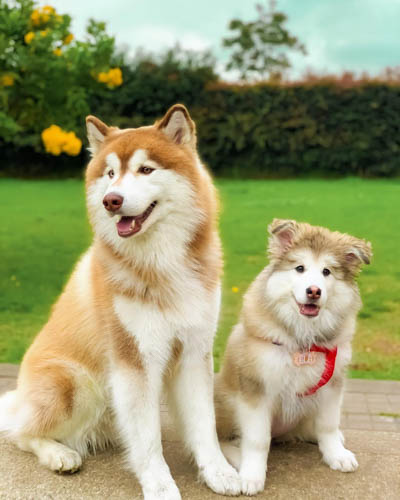
Malamutes from Alaska are generally healthy, but like all types of dogs, they are susceptible to various illnesses. Although Malamutes may not get any or all of these conditions, it’s important to be aware of them since they can be serious.
- Cataracts
Cataracts that begin to form at around the age of 1 to 2 years are often known as juvenile cataracts. Affected animals seldom progress to blindness. Animals with this condition should not be used for breeding.
- Hip Dysplasia
Hip dysplasia is a hereditary disease where the hip joints don’t fit together as they should. There are several grades of severity, with some malamutes showing discomfort only after running or jumping while others may be severely crippled by it. Animals with this condition shouldn’t be used for breeding.
- Chondrodysplasia
This is a mutation found in Alaskan Malamutes. It causes short limbs and enlarged joints leading to arthritis as the dog ages, but it doesn’t affect their lifespan or cause other problems.
- Prognathism
Malamutes have an underbite due to a recessive gene that’s encouraged by breeders. This results in their lower jaw protruding further than their upper jaw. Dogs with this condition should not be used for breeding, but it’s unlikely to cause problems aside from cosmetically unpleasing appearance if the animal is well-bred. Malamutes that are poorly bred may experience difficulties breathing and eating and defects in the roof of the mouth and nose.
- Inguinal Hernias
In dogs, an inguinal hernia is a defect where some of the abdominal contents bulge through a weak point in the lower abdominal wall near the groin area. Surgery is required to correct this condition.
- Hypothyroidism
This thyroid gland malfunction occurs in some dogs and is usually treated by providing replacement hormones.
- Hemeralopia
Hemeralopia is a condition where the eyes don’t correctly adjust to light changes. This breed has what’s known as “double-pigment” retinas, which means their dark-adapted eyes don’t contract in bright lights like other dogs’ would.
Do Alaskan Malamutes Hard to Care For?
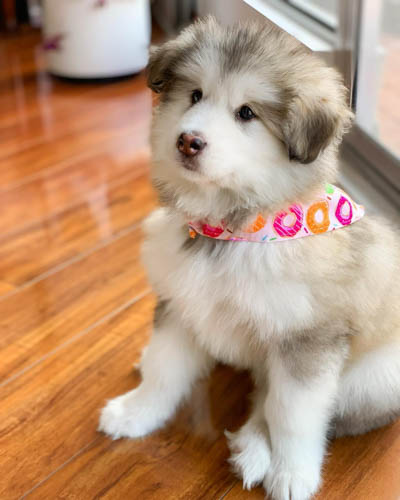
Alaskan Malamutes are a low-maintenance breed that only requires occasional grooming. They rarely have health or behavioral problems, and they’re energetic but calm when inside. This is a robust breed that has been known to live for up to 16 years in good health.
They must be able to run, play, and jump around a lot. Failure to exercise will result in a bored and destructive Alaskan Malamute. However, be sure that the activity is appropriate for the dog’s age, health condition, and activity level.
Malamutes take a lot of pleasure in digging. Rather than attempting to stop it, your best option is to allow it by providing your Malamute their own space in the yard, such as a sandbox or another place that you don’t mind providing.
The Alaskan Malamute can survive in extremely cold climes. They do, however, require a secure enclosure with adequate shelter and preferably a roof.
Malamutes enjoy being with their family in the house, and they are especially happy when doing so. Because they keep their coats clean and are simple to housetrain, they can also thrive when confined indoors.
It’s no surprise that Malamutes are susceptible to heat. They’re not meant to live in hot, humid climates since they’re Arctic dogs. During the summer, be sure to provide your Malamute with plenty of shade, freshwater, and air conditioning if they live in the Sunbelt, as well as avoid exercise during the heat of the day.
How Much Food Does an Alaskan Malamute Consume?
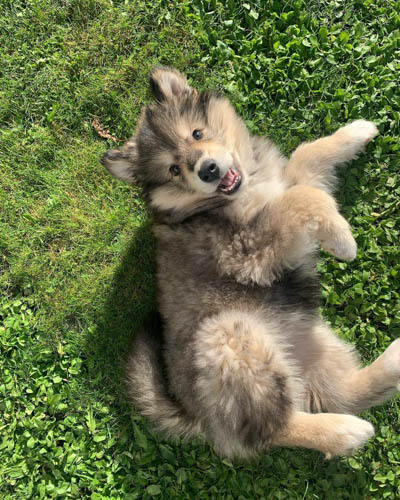
Alaskan Malamutes are large dogs that will eat more than most people expect. However, it’s still possible to feed them for less than $2 per day, even if you buy high-quality food. On average, they need 2 1/2 to 3 cups of dry dog food per day regardless of their age or activity level.
If you plan on feeding your dog a homemade diet, be sure to consult with your vet. Many vets will recommend adding vegetables and grains, but it varies based on the individual dog.
Puppies require different nutrients at various stages of their lives as they grow from puppyhood to adulthood and beyond. Maintain tabs on these nutritional needs as your dog ages.
What About Alaskan Malamute Training?
The biggest challenge in training Malamute is that they can be independent and stubborn. Harsh measures don’t work well with this breed, so it’s best to employ positive reinforcement techniques like clicker training. Another pointer to keep in mind is that this breed doesn’t respond well to heavy correction.
Session training whenever possible, and be patient while your dog learns at its own pace. You may want to take a class or get assistance from a trainer if you’re having trouble with the basics. Overall, these dogs are independent but social. They need to feel like part of the family and enjoy spending time with their human companions.
What to Expect From Alaskan Malamute Puppies?

Puppyhood is a fun and exciting time, especially if you’re getting an Alaskan Malamute puppy. However, it’s important to be prepared for all that comes with having a dog, especially when providing adequate care.
The average Alaskan Malamute puppy is born with blue eyes and dark colors. This color often changes to its adult coloring, which can be brown, grey, or black. Even though most puppies look like adults at birth, there are still differences between Alaskan Malamute puppies and older dogs.
Malamutes are large animals that can grow to an average of 25 inches in height and anywhere from 70 to 110 pounds. As a result, they require a lot of space and often a yard or some area where they can run around. Puppies will be smaller but still, need exercise regularly.
Like all puppies, Alaskan Malamute puppies have lots of energy. However, they are also quite intelligent, which means that training them can be a little more challenging. Socializing is important for this breed and ensuring that they’re exposed to different surroundings and experiences at an early age.
What Are the Best Treats for Alaskan Malamute Puppies?
Alaskan Malamute puppies are playful and hungry all the time. They love to be rewarded for doing something positive, whether that’s good behavior or even just looking cute!
Training your Alaskan Malamute is easy because they’re intelligent animals. However, it can get boring if you simply use kibble as their reward. Instead, try training with something special that they only get as a reward. Many people choose to use small bits of deli meat, chicken, or beef since these are natural goodies for dogs.
Don’t feel like you have to limit your dog’s diet just because you’re training them. Research shows that including treats in their daily food enhances the training process. This makes it easier to train new behaviors, and they’ll respond more quickly since they know they’re getting a tasty reward.
What is the Alaskan Malamute’s Life Expectancy?
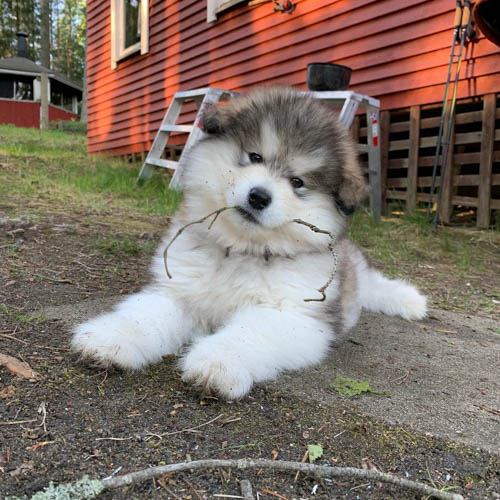
An Alaskan Malamute can live anywhere from 11 to 15 years on average, though some have lived into their twenties with the right diet and medical care. You may want to take extra precautions if you get an older dog, including scheduling regular check-ups with your veterinarian and making sure you have pet insurance in place.
The average litter for this breed is six puppies, though it can be anywhere from two to nine.
Why Do Alaskan Malamute’s Shed So Much?
Shedding is a natural part of owning a dog, and you will find that this breed sheds quite a bit more than some dogs. However, there are steps you can take to control the shedding in your home. For example, brush your dog every day to pull loose hair away from its body.
Cleaning your house frequently can reduce the amount of hair that ends up on your floor and furniture. You may want to invest in a high-quality vacuum cleaner developed specifically for pet hair, which will provide you with better results than a traditional model.
What Do Alaskan Malamute Puppies Cost?
Alaskan Malamute puppies cost anywhere from $500 to $1,000 on average. The price of a puppy can vary based on the breeder and the type of Alaskan Malamute they offer. Many breeders focus on a certain look for their dogs, whether a color or a particular type of tail curl.
What Are Some Fun Facts About Alaskan Malamutes?
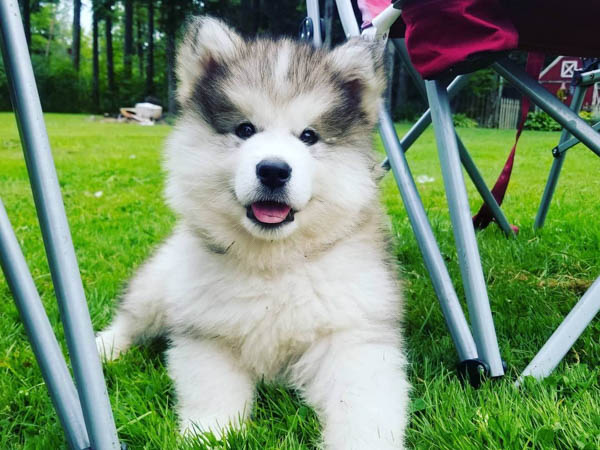
1) Alaskan Malamutes are a very old breed of dog that has been in Alaska for centuries. Some people even believe the Inuit people used them to pull sleds. They remained a popular working dog in this area until WWII, when soldiers took them back to America and Europe as a gift for their children.
2) The Alaskan Malamute is very closely related to the Siberian Husky. In fact, between 1935 and 1959, these breeds were considered the same in American Kennel Club standards.
3) The Alaskan Malamute is considered an ‘ancient’ breed of dog, which means it has a high chance of developing hip dysplasia. If left untreated, this condition can cause severe pain and arthritis in your dog, so make sure you’re monitoring their activity and providing the right care.
4) While they may look a bit intimidating, Alaskan Malamutes are very friendly dogs. They’re known for their intelligence and ability to work with humans, which is why they were used in WWII as sled dogs. Today, they do well in both urban and rural environments.
5) Many of the dogs used in the Iditarod Sled Race are Alaskan Malamutes. This breed is known for its ability to pull heavyweight and travel long distances without tiring.
6) The Alaskan Malamute doesn’t like water, and it will go out of its way to avoid getting wet. As a result, you won’t have much success if you train them for water rescue.
Are Alaskan Malamutes Good With Kids?
An Alaskan Malamute loves kids and is a great family dog. That being said, it’s important to remember that this breed is very large and may accidentally knock smaller children over.
Supervision of children and dogs is important when they’re together, especially if your Alaskan Malamute doesn’t know the children well yet.
Where to Buy or Adopt an Alaskan Malamute?
You will find Alaskan Malamutes for sale in pet stores and through breeders, but we recommend adopting your next pet from an animal shelter or rescue.
Many dogs in this country need a family and a loving home, and you may save a homeless animal’s life by giving them a permanent place to stay.
